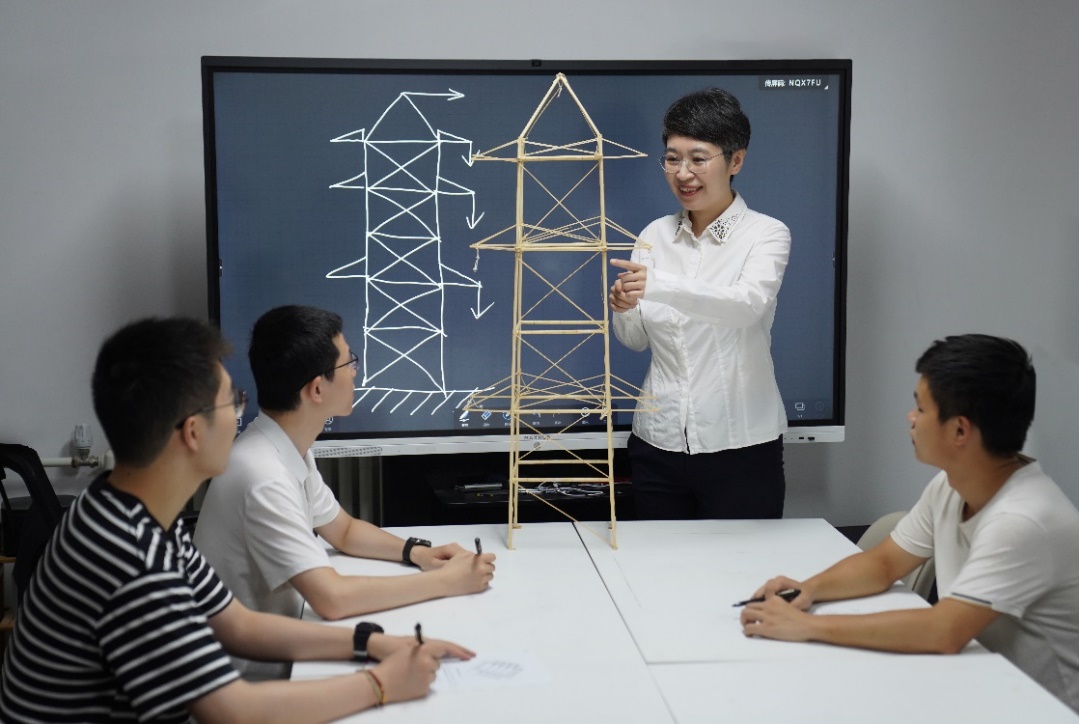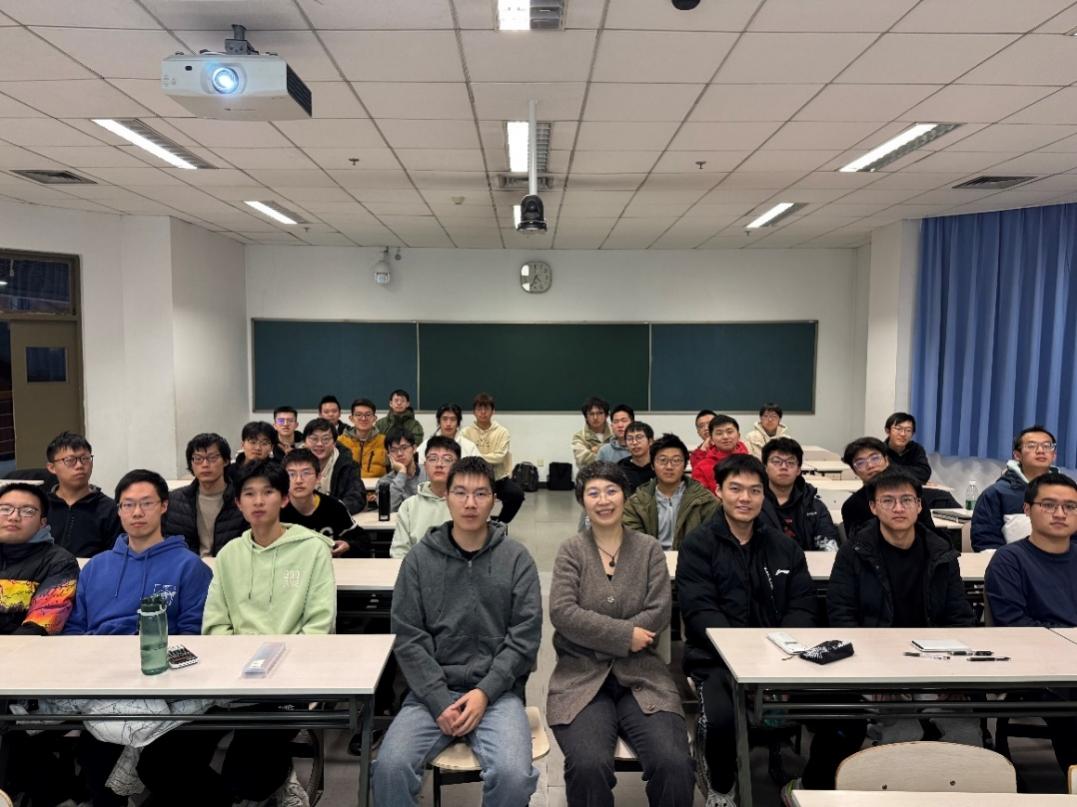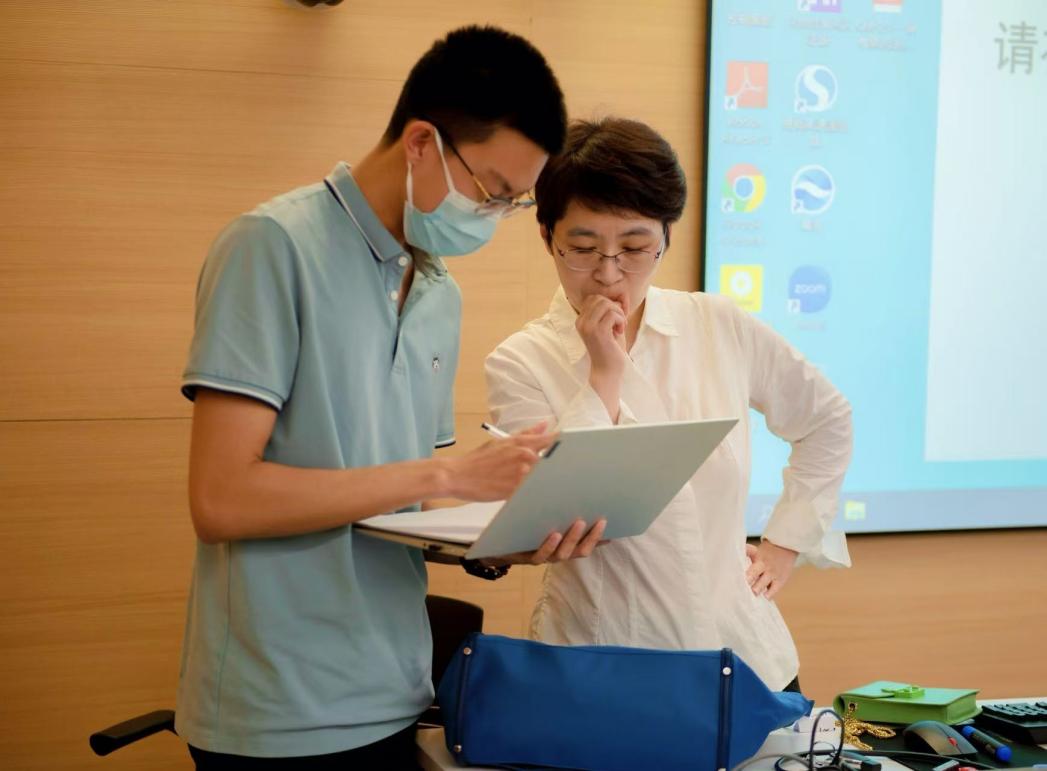From student to educator, Xing Qinyan has maintained a deep and enduring connection with the Department of Civil Engineering of Tsinghua University.
During her years as a learner, her teachers inspired her with their own exemplary drive and love of education, planting the aspiration of becoming a teacher herself.
“Think through problems thoroughly and broaden your perspectives.” This philosophy not only enriches her life but also provides the firm foundation for her teaching. For Xing, the daily teaching routine is never monotonous. Delving deeply into pedagogy and expanding students’ potential brings her immense joy.
In 2024, Xing Qinyan received the 8th Beijing Young Teacher Achievement Award of Higher Education. Inheriting, innovating, and advancing with students—these are the principles she lives by as an educator.
Between Inheritance and Innovation—She Explores the Essence of Teaching
Xing’s course “Structural Mechanics (I)” is praised by students as “a class etched in our minds.”
Her “Writing and Communication” course consistently ranked among the top 5% of more than 700 similar-scale courses at Tsinghua University in five out of nine teaching evaluations.
When asked how to deliver an effective course, Xing invariably emphasizes “inheritance” and “innovation.” She recognizes the accumulated wisdom of previous generations—in course structure and content selection—providing her own foundation for her teachings, saying, “Their lectures mirrored the precision of textbooks while infusing personal insights, making the beauty of mechanics truly tangible.”

Xing Qinyan demonstrates “Structural Mechanics” to her students.
During her own courses, Xing is constantly seeking out new possibilities. She excels at simplifying complexities, focusing on key points to integrate scattered knowledge.
For instance, in “Structural Mechanics (I),” she distills complex concepts into the core principle of “constraint,” describing it simply as the connection between a table’s surface and legs, which transfers force while limiting displacement.
From this starting point, Xing skillfully guides students in connecting various knowledge points, weaving them into a cohesive knowledge network. In her general education course “Writing and Communication,” Xing similarly employs the concept of “structure,” integrating it with texts from drama, films, and other media as a flexible entry point for classroom instruction.
Moreover, Xing actively seeks to bridge the gap between humanities and science.
As a teacher from a traditionally engineering-focused background, offering the “Writing and Communication” course itself was an experimental effort. Meanwhile, in “Structural Mechanics (I),” she integrates the principles of virtual work—which links force and displacement—with the traditional Chinese concept of “unity,” effectively imparting civil engineering knowledge in combination with traditional cultural insights.
Xing also incorporates practical civil engineering examples, such as the steel truss construction for the FAST (Five-hundred-meter Aperture Spherical radio Telescope) structure, subtly nurturing students’ sense of responsibility, pragmatic work ethic, and commitment to national development.
In her view, understanding the essence and distinct characteristics of civil engineering and cultivating a passion for the field are equally essential to mastering its knowledge. If a course is compared to a garment, and the teacher is its tailor, Xing meticulously adds the “humanistic spirit” of civil engineers like decorative beads, sewn tightly and flawlessly, making the garment shine brightly.
Walking Alongside Students, Inspiring Diverse Potentials
In 2021, Xing Qinyan was severely troubled by tinnitus, and the department recommended that she suspend her teaching for the fall semester that year. However, she declined the suggestion.
“Every year, many students eagerly choose ‘Structural Mechanics (I) (Chinese),’ and they’d be disappointed if adjustments were made due to my health.” Xing empathized, persevering through discomfort to fulfill her teaching commitments.

Xing Qinyan with her students
In the classroom, Xing always maintains her sense of empathy, closely observing students’ expressions and intuitively understanding their thoughts. “What students are thinking becomes clear when you observe them from the podium.” She uploads each lecture’s handouts only the day before because she always adjusts the pace and depth of her explanations based on students’ comprehension.
She also meticulously differentiates her teaching approaches for various courses. Zhang Tianye, a former teaching assistant for “Structural Mechanics (I),” admires Xing’s relentless pursuit of teaching excellence. “Professor Xing handles multiple courses across diverse student groups, like the Department of Civil Engineering and Xingjian College. Despite the partly overlapping and partly different content across the courses, she meticulously prepares customized teaching materials and continually incorporates student feedback and needs to make proper adjustments,” Zhang said.
Students view Xing not merely as a professor but as a close friend.
She freely shares engaging anecdotes, actively interacting with students through WeChat Moments, WeChat groups, and in-person exchanges. “Our course group for ‘A Basic Course in Elasticity and Finite Element Method’ remains active even now, with frequent sharing of tidbits and academic discussions,” says Wang Mingyu, a civil engineering student who took her course.
Xing’s efforts are further reflected in surveys of undergraduate civil engineering graduates, where she consistently ranks among the top two “most helpful teachers” for five consecutive years.

Xing Qinyan mentoring students
For Xing, “Every student has unique traits and characteristics,” and she continuously encourages them to explore their potential.
One student sent Xing a message, thanking her and crediting conversations with her for solidifying the former’s decision to pursue scientific research. Yet Xing believes that students’ real growth stems from “self-driven change.” “Recognizing the need for change within oneself is the real driving force; external encouragement is merely supportive,” she commented.
Looking ahead, Xing expressed more interest in new interactions with students than in updating specific teaching plans. “Only by understanding students better can I make tailored adjustments,” she says.
Prioritizing students’ perspectives, walking with them, and crafting personalized teaching methods remain Xing’s enduring motivations for deepening her teaching practice and exploring ever-wider possibilities.
Editor:Li Han

